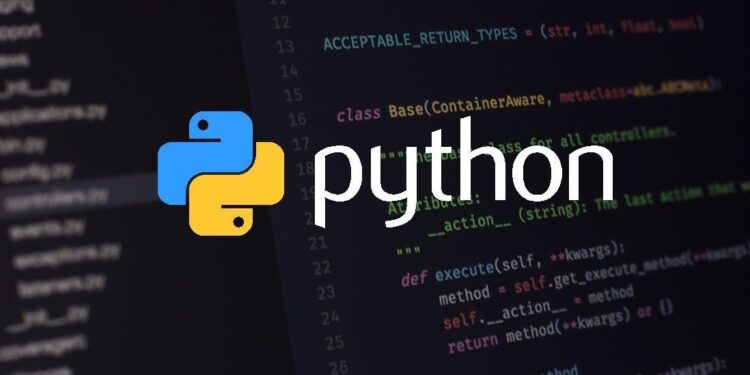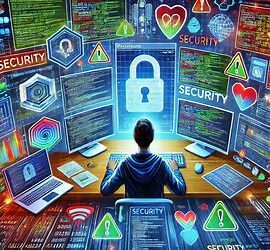Over the past few years, the Python programming language has expanded incredibly. Python, once regarded as a specialized language, is now widely used for both scripting and application development. Python is a great language to start with for those who are new to programming. It’s an extremely approachable language for beginners thanks to its straightforward syntax, readability, and wide variety of libraries. Python is used by organizations including Google, Facebook, Netflix, and NASA to power important websites and services.
This guide provides an introduction to the Python language for beginners. It covers downloading and setting up Python and the basics of this language.
What Is Python?
Python is a popular, open-source programming language used for both scripting and application development. Python, which was developed by Guido van Rossum in 1991, is regarded as one of the most readable and approachable programming languages.
Python is a general-purpose, high-level, interpreted language. Because of this, Python code is executed line by line, it can be used for both scripting and application development, and it can handle a lot of the complexity that lower-level languages need.
Python’s syntax is straightforward and simple to learn, with a focus on readability. The language’s similarity to English has led to it being called “executable pseudocode” on numerous occasions. Python is a fantastic first programming language for beginners because of this.
Python supports a variety of programming paradigms, including imperative, functional, and object-oriented programming. Python can be used for both scripting and the creation of complex applications thanks to its versatility. For tasks like web development, software engineering, scientific computing, and more, Python has a sizable collection of libraries and frameworks. The most well-known libraries include SciPy, Django, NumPy, and Flask.
Since Python is portable, it can be used on a wide range of platforms and operating systems. Python can often be ported between platforms with little to no changes because it is supported on Windows, Linux, and macOS.
Python is a flexible, simple-to-learn programming language that can be used for creating both scripts and applications. Python is a fantastic first programming language and a potent tool for creating software solutions thanks to its straightforward syntax, extensive libraries, and portability.
Why Learn Python?
For a number of reasons, Python is regarded as one of the most well-liked and practical programming languages to learn:
- It’s simple to read and write in Python. With a clean visual design and effective use of whitespace, the syntax is both straightforward and elegant. Python code is thus simple to comprehend and troubleshoot. Python allows beginners to get up and running quickly.
- Python is a general-purpose language with uses in software engineering, scientific computing, web development, and more. Python is a valuable skill due to its adaptability and usefulness in a variety of fields.
- Python has a sizable library of pre-built functions and a straightforward, consistent syntax. This means that a lot can be done without having to start from scratch with the coding. Python includes a sizable library system for a variety of tasks, including scientific computing, web development, software engineering, and more.
- Python is open source and free. The language is constantly being improved by a sizable and active development community, which is also producing helpful tools and libraries. Python is adaptable and can be used with a variety of OSes, including Windows, Linux, and macOS.
- Python is a language with few words. Python programs are usually much shorter than comparable programs written in C, C++, or Java. Python code is thus simple to read, write, and maintain.
- Python expertise is highly sought-after. Python programmers are in high demand at numerous top tech firms. Python training can lead to a variety of career opportunities.
Getting Started With Python
To get started with Python, there are a few steps to follow:
- Install Python
Installing the Python interpreter on your computer is the first step. Python 2 and Python 3 are the two available versions. Installing Python 3 in its most recent iteration is advised for beginners. The official Python website offers a free download of the Python installer.
- Choose an IDE
It is simpler to code in Python when using an integrated development environment, or IDE. Among the top choices for beginners are:
- IDLE: Is extremely lightweight and is included with Python. optimum for little projects.
- PyCharm: Created by JetBrains, free community edition available. Code completion, debugging tools, and version control integration are all included in the full-featured IDE.
- Visual Studio Code: Open-source code editor from Microsoft with Python extension. includes additional features like version control and debugging.
Learn Python Syntax
Python syntax is simple and easy to read, with strict indentation and spacing. Some key things to know:
- Comments start with #
- Variables don’t require type declaration
- Use if/else statements and for loops to iterate over conditions.
- There are numerous built-in data structures in Python, including dictionaries, sets, tuples, and lists.
- Def statements are used to define functions.
- Additionally, OOP concepts like classes are supported.
- Practice
Practice is the only way to actually learn a programming language. Several Python training suggestions
- Complete interactive coding exercises and tutorials
- Go through some Python code examples.
- Create a small project such as a simple script, game, or web application.
- Apply your knowledge by tackling coding puzzles and challenges.
Python is a very powerful and user-friendly programming language that is great for both newcomers and seasoned programmers. Python’s straightforward syntax frees programmers from having to worry about learning the language, allowing them to concentrate on solving complex problems. Python is a great choice for both scripting and application development thanks to its extensive libraries and readability. Overall, Python has established itself as one of the most well-liked and rapidly expanding programming languages in the world today thanks to its strength, simplicity, and scalability.
















